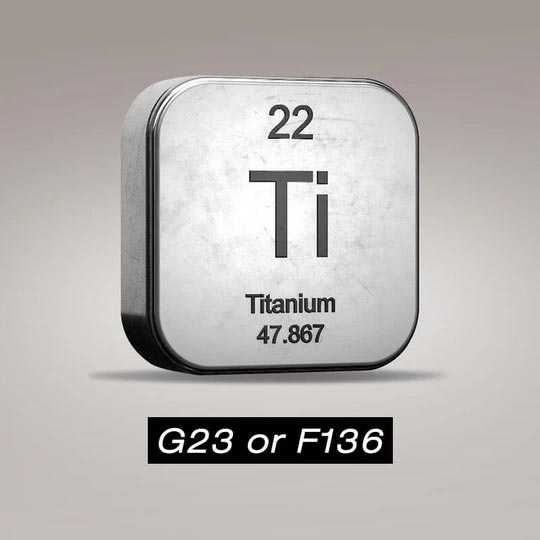
Nostril Piercing: The Definitive Guide(2022)
Nostril piercing is second in popularity only to piercings of the ear. Many indigenous populations in the Americas, Africa, and India have worn nostril piercings throughout the ages.
In western culture, nostril piercing is primarily an aesthetic placement and does not ordinarily indicate marital, financial, or other status, as it often does in other regions.
Overview:
Description: Placed on the side of the nose, usually seated in a inche called the supra-alar crease(where the nostril naturally flares)
Healing time: 3 to 4 months or longer
Initial jewelry style: Ring-style, nostril screw, or mini barbell
Initial jewelry gauge: Rings 20 gauge or thicker, up to 12 gauge for a large piercing; 20- or 18-gauge nostril screws with a head(gem, ball, or other ornament) 1.75mm or larger; or 16 gauge, with a head 2mm or larger
Initial jewelry size: Ring diameters commonly 5/16(8mm) to 7/16(11mm) inch; post length on nostril screw or mini barbell is anatomically dependent and must have room for some swelling.
Nostril Piercing: Placement
The traditional placement for a nostril piercing is at the crease line on the side of the nose.
A big smile accentuates this feature to help pinpoint the spot. This area is often thinner than the rest of the nose, so it may heal faster and feel less tender when pierced.
The jewelry will rest in a natural niche, where it nestles most gracefully.
Depending on your preferences, other placements are also possible;higher or lower, closer to the tip of your nose or your face.
The backing of a nostril screw or mini barbell will be visible when the piercing is too low, even if the jewelry is properly sized.
Multiple nostril piercings are another possibility.
Due to space constraints, you will achieve the most attractive, comfortable results when you decide on an overall plan before your first piercing is made.

Nostril Pain Level
The nostril pain level is about 5-6 of the 10 scale, a little painful, but can be bear also, it is a little similar to ear cartilage, tongue tip piercing. Below is a body piercing pain scale chart for reference.

By comparing the different piercing pain level, you can get your personal decision, whether you can accept the pain or not.
Nostril Piercing: All about Jewelry
A number of popular jewelry styles are much better suited to the nostril, and each has its own advantages and disadvantages.
The placement and angle of the piercing is closely connected to the way jewelry fits in the nostril.
Nostril Piercing: The Ring
The higher the piercing is placed on your nose, the larger the ring must be to fit.
A 3/8-inch ring is an average diameter for this area; to wear it, your piercing must be placed just shy of that distance from the edge of your nostril-unless the channel angles downward a little on the inside.
However, if the angle is too steep, this will cause the ring to stick out too far from your nose.
Ring-style jewelry works well for healing, but if you require an adornment that is more discreet, you will prefer a stud style initially.
If you start with a stud but want the option to wear ring-style jewelry later, carefully plan the height and angle of the placement with your piercer.
Nostril Piercing: The Nostril Screw
The nostril screw is a stud modeled after a traditional East India design. The ornament displayed on the exterior rests atop a straight wire post that passes through the piercing; the tail terminates in a curl that resets flat against the interior of your nostril.
This keeps the jewelry in place without requiring a backing. When properly sized and shaped to fit you, the jewelry is comfortable and is not visible inside your nose.
Nostril screws set with gems are a very popular style for nostril piercings, and many of the stone settings are flat in the back, where they attach to the post.
For the stone to rest properly on your nose, this, too, must be factored in with the angle of your piercing and the shape of your nose. On a nostril of average shape the same angle will often suit both a ring and s stud set with a gem.
Nostril Piercing: The Mini Barbell
A flat disc backing on a mini barbell minimizes jewelry on the interior of the nose, and it eliminates the need to bend or adjust the jewelry.
The press-fit style with a removable end is versatile, as different gems or shapes can be interchanged with the help of hemostats to hold the post.
Some piercers may not be familiar with this jewelry, but it is an excellent option for piercees who do not find nostril screws to be comfortable.
Nostril Piercing: The L-Bend Style
Some piercees prefer a modified nostril screw, the L-bend, which lacks the curl on the inside portion of the wire.
This makes the jewelry easier to insert(which is convenient when you change yours frequently), but it is also more likely to fall out.
After you are healed, this style can work well if you are carefully not to dislodge it.
A normal earring post won’t be long enough to form into an L-bend; specialized jewelry is still required.
Nostril Piercing: The Nose Bone Style
The nose bone is a short, straight post that consists of a gem or other ornament worn on the exterior and a small ball(approximately one-half to a full gauge size thicker than the post) on the inside.
This requires you to stretch the piercing somewhat to insert and remove the jewelry, which has the potential to damage your tissue.
They only work in a healed piercing if your skin is pliable. If not, they can be dangerous to the health of your piercing.
The nose bone is not a safe design for a healing piercing.
Nostril Piercing: Healing and Troubleshooting
The dense tissue takes months to heal, but the nose is less subject to trauma than many other pierced areas.
Keep eyeglasses and sunglasses clean and don’t let them rest on the jewelry.
Some redness or swelling is common during initial healing.
If your nostril screw is sized correctly, it will accommodate a usual amount of puffiness.
If the jewelry appears to be sinking into your tissue, a possible resolution is to apply a tiny piece of Micropore paper tape, available at drug stores.
To keep the head of the nostril screw propped above the surface of your tissue. Change the tape daily until the swelling subsides.
If this technique is unsuccessful in dealing with the problem, see a piercer right away to discuss your options.
If your jewelry has made a large hole by sinking well into your skin. You may have to wear a ring for the remainder of healing.
Even switching to a stud with a longer post, a larger head, or both may not help.
Handle the problem promptly or the tissue can rapidly grow over your jewelry, and you will have an embedded pierce that requires surgical removal.
Nostril Piercing: Changing Jewelry
Once your piercing has fully healed, with a little patience and practice, you may be able to change nostril jewelry yourself, though many piercees prefer to get assistance from their piercer.
To remove a nostril screw, it must be twised and pulled, following the curve of the corkscrew.
Most nostril screws are tiny and can be tricky to handle, especially at first.
Inserting a nostril screw is a little like riding a bicycle; when you move too slowly, it doesn’t go smoothly.
Once the tail portion is through the nostril, a swift twisting motion to get the post through the tissue is often best.
The hard part can be passing the tail all the way through the channel before it curves--and finding the inside surface, since you can’t see it.
If the screw is made with too short or tight a tail, it can be nearly impossible to insert, even if the straight post is long enough.
Nostril Piercing: Concealment
After healing, if you need to conceal your piercing, you can wear a tiny, flat disc that has been painted with skin-tone nail polish.
Another option is a nostril screw topped with a very small dome or ball of flesh-colored acrylic.
These can be used for fresh piercings if they meet the safety requirements for minimum size, implant-grade post material, a custom fit, and the ability to withstand the heat and pressure of sterilization.
Clear glass and quartz nostril screws are made for concealment, but they are fundamentally unsuited to a healing piercing since the shape cannot be customized.
Use caution even when trying them in healed piercings, as they can be fragile, and if they don’t fit well, the inflexible material may irritate your piercing.
Retainers in high-tech, inert plastics are also available for post-healing concealment.
The plastic are more forgiving than the harder materials, and they are not breakable. Depending on dimensions and design, they may not stay in place well.
Nostril Piercing: Retiring
Many piercees find a nostril piercing does not stay open long without jewelry in place.
The hole can shrink in the time it takes you to remove, wash, and try your jewelry and try to put it back in place.
If you like the piercing, leave jewelry in at all times.
If you abandon a nostril piercing, you will have minimal scarring if you wore the usual small-gauge jewelry and your healing was uneventful.
The residual mark ordinarily resembles an enlarged pore. Troubled healing could leave sub-stantial scarring.
How to Take Care of Nostril Piercing
The Golden Rule of Piercing Hygiene that all piercees must follow to avoid infection is this: do not touch your piercing with dirty hands.
Properly wash your hands before touching your jewelry and the surrounding area.
Regularly disinfect objects that rest in close proximity to your piercing, such as telephones, earphones, or eyeglasses.
Do not allow personal care products such as sprays and lotions to get into your piercing. Keep these at least a fingertip’s distance away from facial piercings-and make sure applicators such as makeup sponges are clean.
If your jewelry fits properly and is of high quality, leave it in during the entire healing time.changing it unnecessarily can damage the fragile tissue.
Take care not to bump or catch your piercing when donning hats, eyeglasses, sunglasses, and so on. If you want know more about nose piercing rings types and materials, please read this blog All about Nose Rings: Types and Materials









2 comments
Hey very nice blog!
online canadian pharmacy
My friend’s teenage daughter wants to get her nose pierced. I am not sure that she knows how many different kinds there are. Thank you for listing them on your website. I will refer her to check out the different ways a nose can be pierced. https://thechosenoneinktattoo.com/nose-piercings
Vivian Black
Leave a comment
This site is protected by hCaptcha and the hCaptcha Privacy Policy and Terms of Service apply.